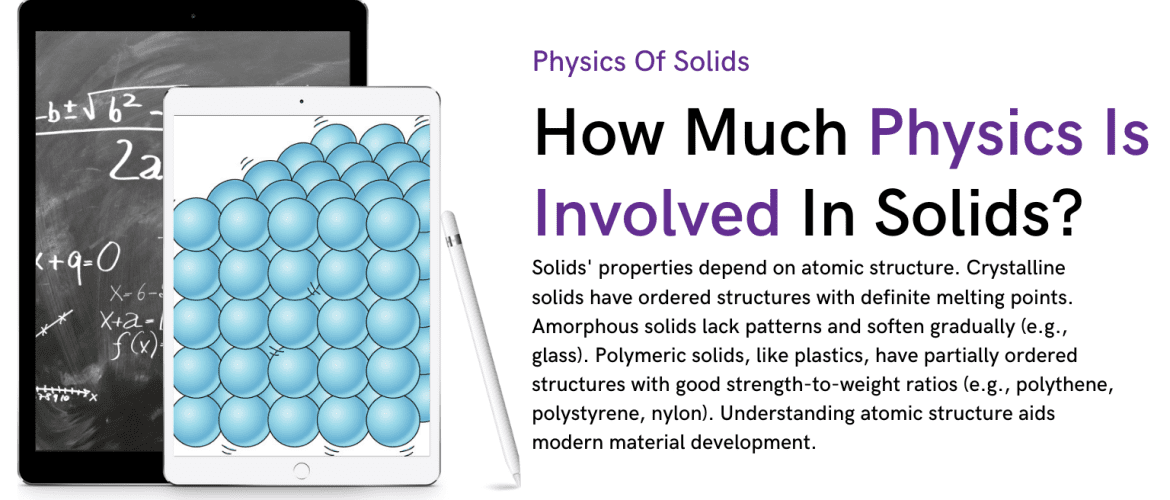Physics is a fascinating field that seeks to understand the fundamental principles governing the universe.
When we look at the world around us, we often think of solids as just the stuff that makes up our everyday objects.
But did you know that there’s a whole branch of physics dedicated to the study of solids?
This branch, aptly named “Solid-State Physics,” explores the properties and behaviors of solids, and it plays a crucial role in our modern world.
In this student-friendly discussion, we’ll delve into how much physics is involved in understanding solids.
We’ll uncover the fundamental concepts, the importance of solid-state physics in various applications, and how this knowledge continues to shape our technological advancements.
Different materials have specific uses depending upon their characteristics and properties like hardness, ductility, malleability, conductivity, etc.
All of these properties depend upon the structure meaning the particular order and bonding of atoms in a material.
The understanding of particular order and bonding of atoms has made it possible to generate new materials for use in modern technology.
Classification Of Solids
Solids are classified into three different categories depending on their appearance and structure.
Crystalline Solids
An ordered structure is followed in crystalline solids and every atom is closely packed together, following a regular pattern.
This regular pattern is constant throughout the crystalline solids.
The cohesive forces between atoms maintain the strict long-range order in spite of atomic vibrations.
However, for every crystal, there is a temperature where the solid melts into a liquid and this transition is abrupt and discontinuous.
Meaning every crystalline solid has a definite melting point.
Amorphous Solids
The word amorphous means without form or structure.
There is no regular pattern being followed and this type of solid is more like liquid frozen in a form of shape.
The best example of this type of solid is glass.
At room temperature, it’s a solid but gradually softens into a paste-like state at a very high temperature.
And at around 800c it is converted into a very viscous liquid.
These types of lids have no definite melting point and are also known as glassy solids.
Polymeric Solids
These solids can be classified as partially or poorly crystalline solids.
Polymers are said to be more or less solid materials with a structure between order and disorder.
Polymers for a large group of naturally occurring and synthetic materials.
Plastics and synthetic rubbers are termed polymers because they are the product of polymerization reactions in which simple molecules are combined into massive long-chain molecules.
They exhibit a good strength-to-weight ratio.
Polythene, polystyrene, and nylon are examples of polymers.
To Summarize
In conclusion, the world of solid-state physics is vast and intriguing.
It not only enriches our understanding of the everyday objects around us but also fuels the innovations of the future.
Whether you’re intrigued by the way your smartphone works, the materials used in space exploration, or the next breakthrough in renewable energy, solid-state physics is the cornerstone upon which these developments are built.
As students, this field offers an exciting avenue for exploration and learning, with boundless opportunities to contribute to the ever-expanding body of knowledge about the physics of solids.
So, the next time you pick up your favorite gadget or marvel at a new technological marvel, remember that it’s solid-state physics that has helped make it possible.




Leave A Comment